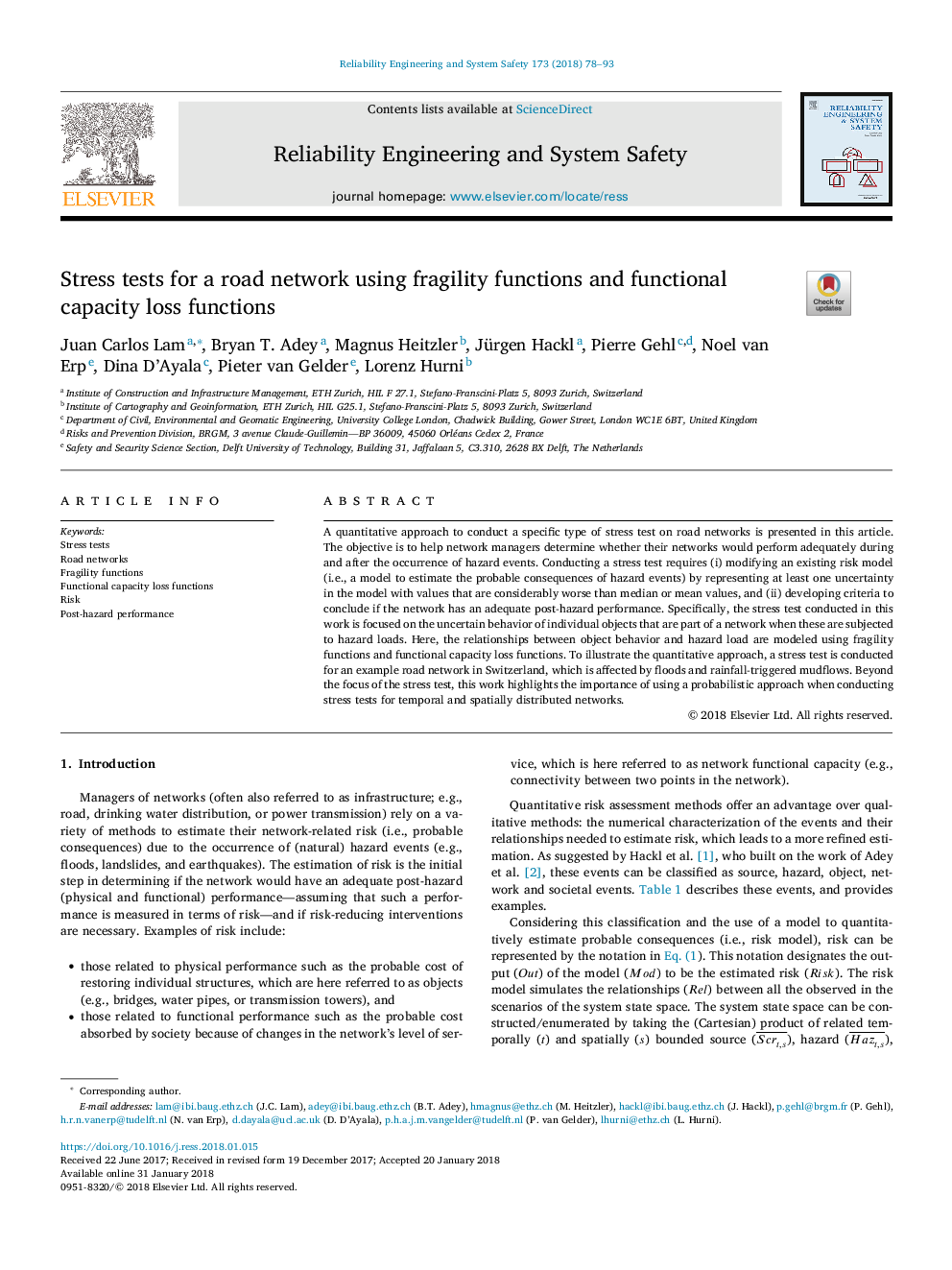| Article ID | Journal | Published Year | Pages | File Type |
|---|---|---|---|---|
| 7195223 | Reliability Engineering & System Safety | 2018 | 16 Pages |
Abstract
A quantitative approach to conduct a specific type of stress test on road networks is presented in this article. The objective is to help network managers determine whether their networks would perform adequately during and after the occurrence of hazard events. Conducting a stress test requires (i) modifying an existing risk model (i.e., a model to estimate the probable consequences of hazard events) by representing at least one uncertainty in the model with values that are considerably worse than median or mean values, and (ii) developing criteria to conclude if the network has an adequate post-hazard performance. Specifically, the stress test conducted in this work is focused on the uncertain behavior of individual objects that are part of a network when these are subjected to hazard loads. Here, the relationships between object behavior and hazard load are modeled using fragility functions and functional capacity loss functions. To illustrate the quantitative approach, a stress test is conducted for an example road network in Switzerland, which is affected by floods and rainfall-triggered mudflows. Beyond the focus of the stress test, this work highlights the importance of using a probabilistic approach when conducting stress tests for temporal and spatially distributed networks.
Related Topics
Physical Sciences and Engineering
Engineering
Mechanical Engineering
Authors
Juan Carlos Lam, Bryan T. Adey, Magnus Heitzler, Jürgen Hackl, Pierre Gehl, Noel van Erp, Dina D'Ayala, Pieter van Gelder, Lorenz Hurni,
